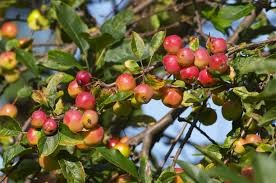Southern Water Biodiversity Grant funded - Hedging Our Future Project
September brings early morning mists and the first heavy dews. The colours of the countryside are changing with fruits starting to peep through the browning leaves with hints of red and black. Blackberries are ripening and birds preparing to migrate. But although there are signs of autumn, summer lingers on so that September can be the best of both worlds. Many plants are still in flower: hogweed, hedge woundwort, white deadnettle and glorious honeysuckle. The last of the House Martins and swallows will be thinking of departing.
September is the month of berries - bramble, rowan, hawthorn, black bryony, and spindle, just a few, a hedgerow harvest which will attract a flocks of winter birds. The spring flowers have evolved into fruits and seeds and the birds adapt their feeding habits to enjoy elderberry, bramble, rosehips, hawthorn and blackthorn berries. The smaller mammals, like vole and wood mouse, emerge from their nests in the depth of the hedge to search out the new crops of hazel nuts, acorns and fruits for their winter stores. They climb through the hedge, often occupying the nests vacated by fledgling birds for use as a feeding place.
In the damp mornings, the dew spangled webs of spiders: the most common being the garden, or orb spider; with the money spider hanging in wait beneath its hammock web.

Another invertebrate that makes itself known in the evening along hedgerows is the singing bush crickets and they can be heard rubbing their wing cases together to attract the opposite sex. They are difficult to hear as we get older as their chirping is very high pitched.
Many of our orchard trees will also be providing us with fruit in September and we must make the most of this boom time. In the hedges that we plant we include crab apples, wild plum, wild cherry and even pear species so that wildlife get plenty to feed on. That and the acorn and hazelnuts, and we hope that there is a good food offering.
With this natural bounty it can be very tempting to go and enthusiastically pick sloes and blackberries but we must remember that this is the last food glut for many species which rely on it to build their fat stores to get through harsh and lean winter months. So please do always leave some for the creatures who can't do a Tesco shop!




Comentários